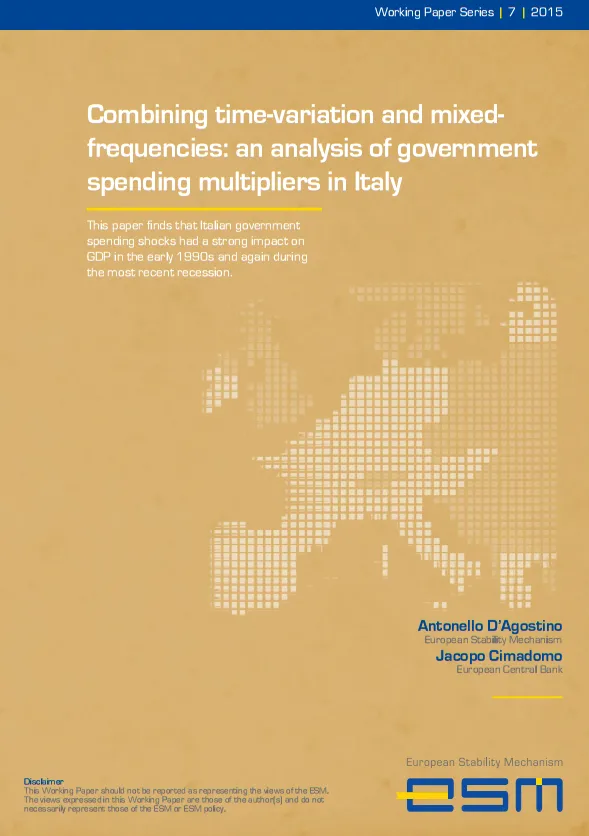Combining Time-variation and Mixed-frequencies: An Analysis of Government Spending Multipliers in Italy

Download PDF: Working Paper 7
This paper finds that Italian government spending shocks had a strong impact on GDP in the early 1990s and again during the most recent recession.
Author: Antonello D’Agostino | Senior Economist in the Economics and Policy Strategy department
with Jacopo Cimadomo | European Central Bank
Abstract:
In this paper, we propose a time-varying parameter vector autoregression (VAR) model with stochastic volatility which allows for estimation on data sampled at different frequencies. Our contribution is two-fold. First, we extend the methodology developed by Cogley and Sargent (2005), and Primiceri (2005), to a mixed-frequency setting. In particular, our approach allows for the inclusion of two different categories of variables (high-frequency and low-frequency) into the same time-varying model. Second, we use this model to study the macroeconomic effects of government spending shocks in Italy over the 1988Q4-2013Q3 period. Italy - as well as most other euro area economies - is characterised by short quarterly time series for fiscal variables, whereas annual data are generally available for a longer sample before 1999. Our results show that the proposed time-varying mixed-frequency model improves on the performance of a simple linear interpolation model in generating the true path of the missing observations. Second, our empirical analysis suggests that government spending shocks tend to have positive effects on output in Italy. The fiscal multiplier, which is maximized at the one year horizon, follows a U-shape over the sample considered: it peaks at around 1.5 at the beginning of the sample, it then stabilizes between 0.8 and 0.9 from the mid-1990s to the late 2000s, before rising again to above unity during the recent crisis.
Disclaimer: This Working Paper should not be reported as representing the views of the ESM. The views expressed in this Working Paper are those of the author(s) and do not necessarily represent those of the ESM or ESM policy. No responsibility or liability is accepted by the ESM in relation to the accuracy or completeness of the information, including any data sets, presented in this Working Paper.
JEL codes: C32, E62, H30, H50